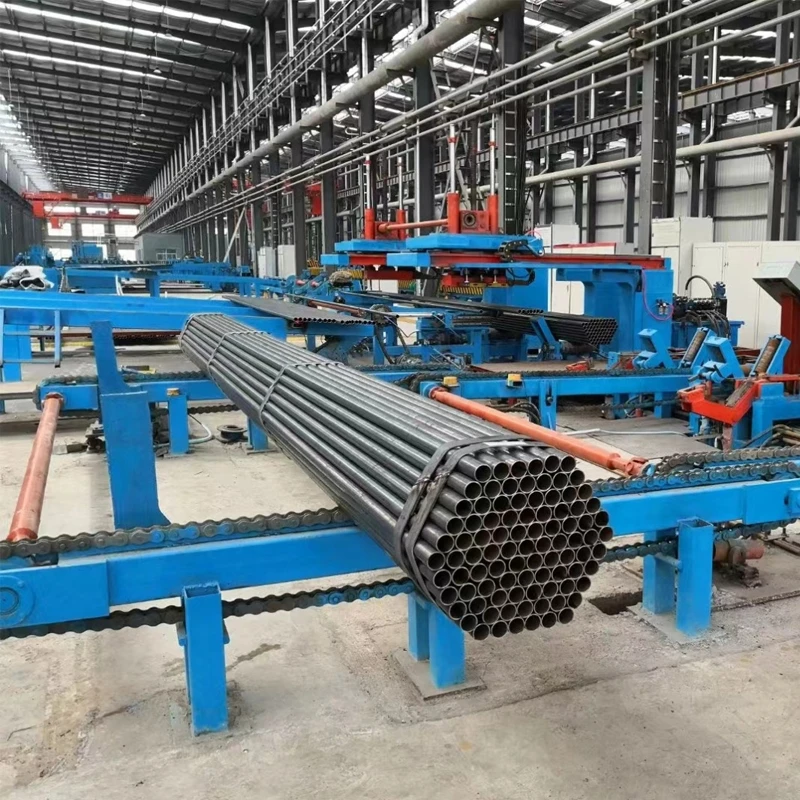roll forming tube
The Importance of Roll Forming Tubes in Modern Manufacturing
In the landscape of modern manufacturing, roll forming has emerged as a critical technique for producing high-quality, precision-engineered components. Among the diverse applications of roll forming, the production of tubes is particularly noteworthy. Roll forming tubes involves a continuous bending operation in which flat metal strips are transformed into tubular shapes. This method not only enhances production efficiency but also ensures the structural integrity and consistency of the end products.
Understanding Roll Forming
Roll forming is a process that uses a series of rollers to gradually shape metal sheets or strips into desired cross-sectional profiles. The process is characterized by its efficiency and ability to produce long lengths of uniform products with minimal waste. When applied to tube formation, roll forming allows manufacturers to create tubes of various sizes and shapes, tailoring them to meet specific engineering requirements.
The roll forming process begins with a flat metal strip, which is fed through a set of rollers. Each roller is designed to bend the metal to a specific angle, and as the metal passes through successive rollers, it progressively attains the desired tubular shape. This continuous method can handle a wide range of materials, including steel, aluminum, and other alloys, making it versatile for numerous applications.
Applications of Roll Forming Tubes
Roll formed tubes find applications across various industries. In the automotive sector, they are utilized for producing structural components that are both lightweight and robust, contributing to improved fuel efficiency and safety. In the construction industry, roll formed tubes serve as essential parts of scaffolding, support systems, and frames, providing critical structural integrity. Additionally, they are widely used in the furniture industry for creating stylish, yet sturdy pieces.
roll forming tube

Moreover, the energy sector benefits significantly from roll forming technology. Tubes produced through this method are used in applications ranging from oil and gas pipelines to components in renewable energy systems, such as wind turbines. Their ability to be manufactured with precise tolerances makes them ideal for these demanding applications.
Advantages of Roll Forming Tubes
One of the primary advantages of roll forming tubes is the cost-effectiveness of the process. By minimizing material waste and enhancing production efficiency, manufacturers can achieve significant cost savings. The continuous nature of roll forming also leads to shorter lead times, enabling quicker product delivery to meet market demands.
Another key benefit is the superior mechanical properties of the tubes produced. Roll forming helps to impart a uniform grain structure in the metal, enhancing its strength and durability. This property is particularly advantageous in applications where the tubes must withstand high levels of stress or harsh environmental conditions.
Furthermore, the aesthetic appeal of roll formed tubes cannot be overlooked. With the ability to finish surfaces and produce intricate designs, manufacturers can create visually appealing products that meet consumer preferences without compromising performance.
Conclusion
Roll forming tubes represents a vital segment of manufacturing technology that continuously shapes the industry's landscape. Its myriad applications across various sectors underscore its significance in enhancing the quality and efficiency of production processes. As technology advances, the roll forming process is likely to evolve further, integrating automation and innovation to meet the ever-growing demands of modern manufacturing. The strength, versatility, and cost-effectiveness of roll formed tubes secure their place as a crucial component in the creation of durable and high-performance products.
-
High Frequency Straight Seam Welded Pipe Production Line-BzZhou Xinghua Machinery Equipment Manufacturing Co., LTD.|line pipe steel&welded gas pipeNewsJul.30,2025
-
High Frequency Straight Seam Welded Pipe Production Line-BzZhou Xinghua Machinery Equipment Manufacturing Co., LTD.|High Precision&Automated SolutionsNewsJul.30,2025
-
High Frequency Straight Seam Welded Pipe Production Line - BzZhou Xinghua Machinery Equipment Manufacturing Co., Ltd.NewsJul.30,2025
-
High Frequency Straight Seam Welded Pipe Production Line-BzZhou Xinghua Machinery Equipment Manufacturing Co., LTD.|Precision Welding, High EfficiencyNewsJul.30,2025
-
High Frequency Straight Seam Welded Pipe Production Line|BzZhou Xinghua|Precision Welding&EfficiencyNewsJul.30,2025
-
High Frequency Straight Seam Welded Pipe Production Line - BzZhou Xinghua|Precision Engineering&EfficiencyNewsJul.30,2025


